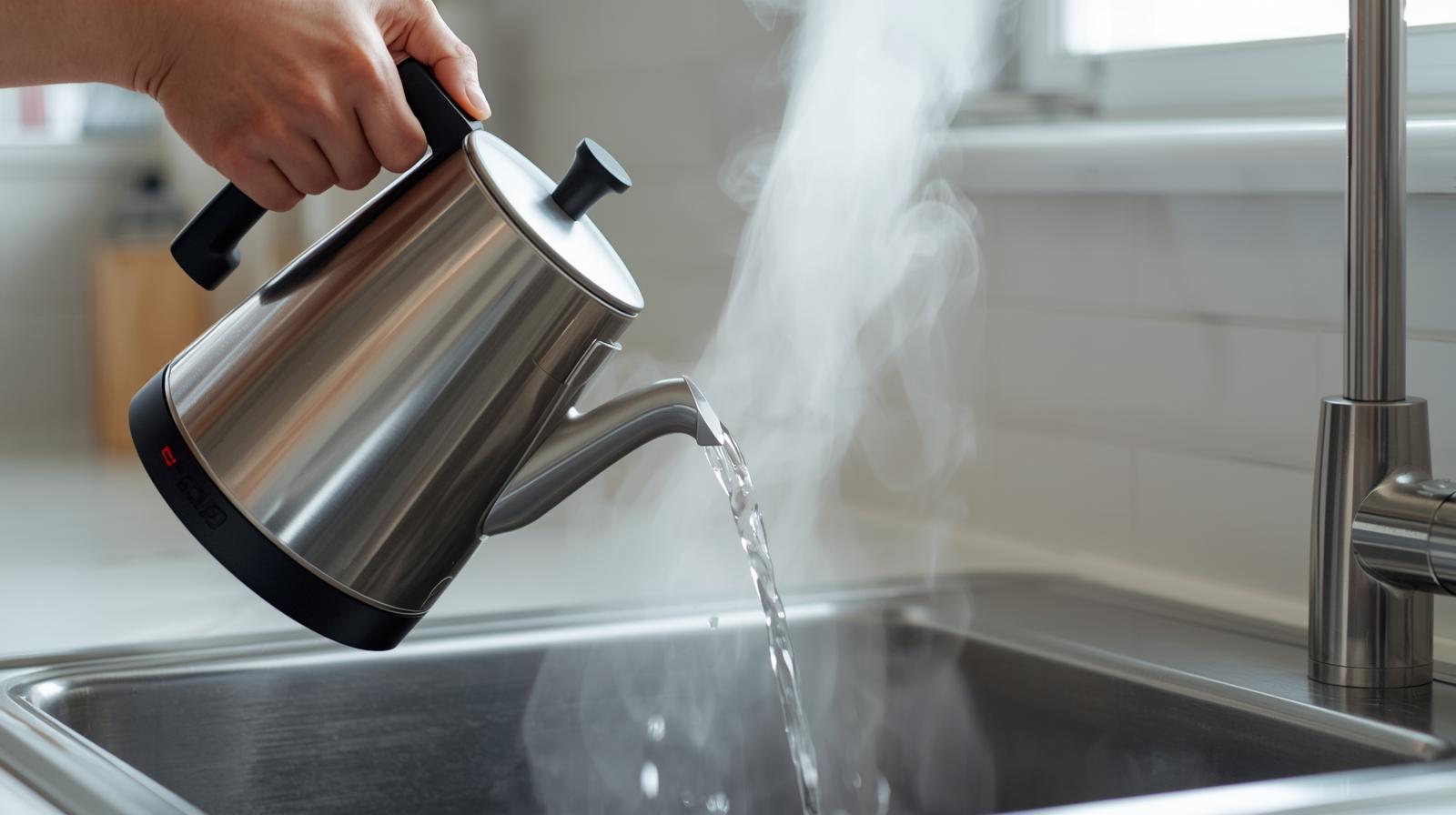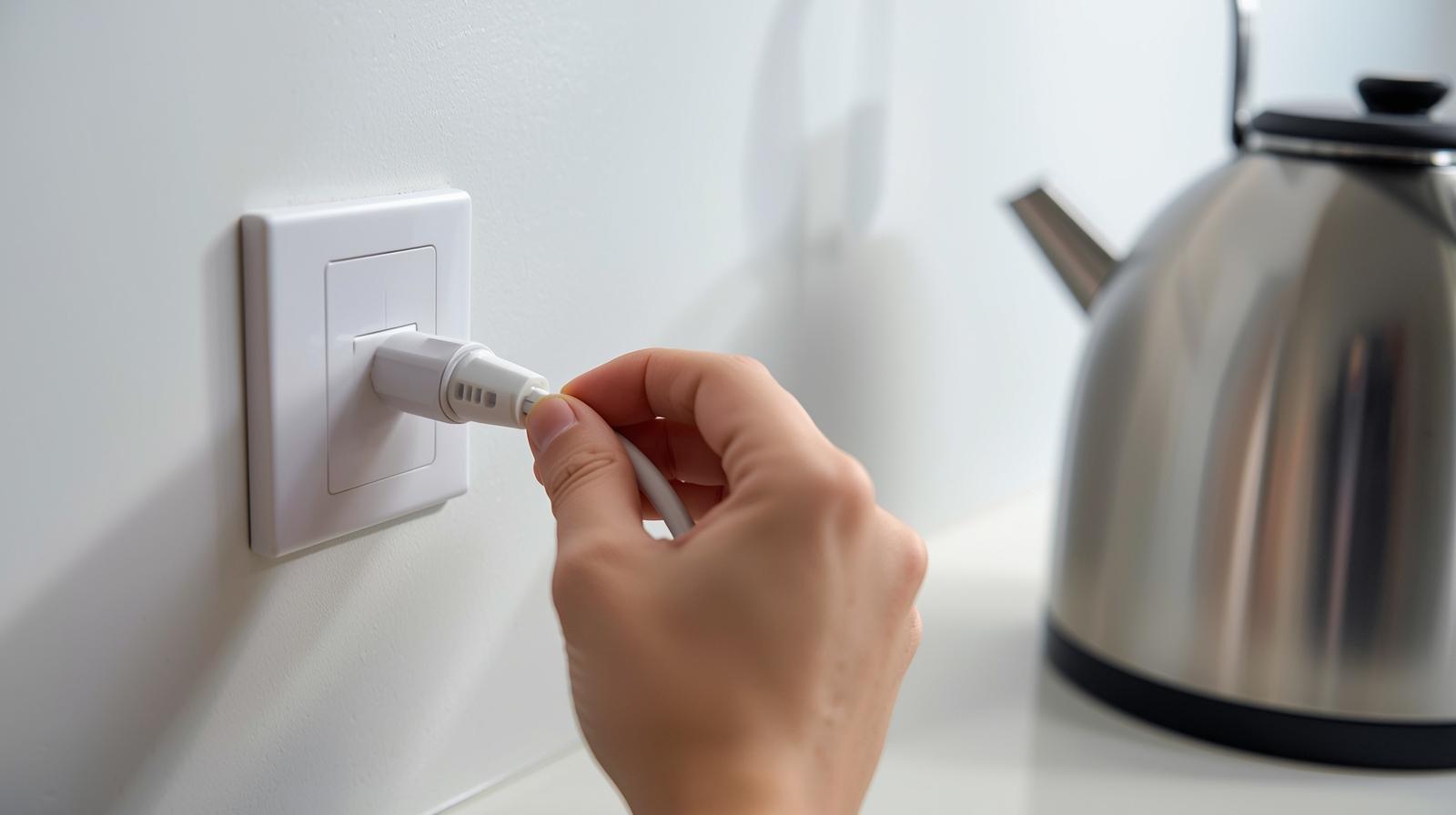Imagine your electric tea kettle, a trusted companion for your daily brew, sparkling clean and working at its best. You deserve a perfect cup every time, free from strange flavors or mineral buildup.
A neglected kettle can quickly develop mineral deposits and stains that affect both taste and performance. The good news? Cleaning it is easier than you think. With a few simple steps, you can keep your kettle fresh, shiny, and efficient for years.
In this guide, you’ll learn how to clean your electric tea kettle safely, remove stubborn limescale, and maintain its shine — all without harsh chemicals or complicated methods. Let’s get started!

What You’ll Need
Before starting, it’s helpful to gather all the necessary supplies. This makes cleaning smoother and more effective. Here’s what you’ll need:
- Soft cleaning cloths: Microfiber works best to wipe the exterior without scratching.
- White vinegar or lemon juice: Natural descalers that remove limescale and deposits.
- Baking soda: Helps scrub stubborn stains gently.
- Soft brush: A toothbrush or small brush for hard-to-reach areas inside the kettle.
- Measuring tools: Cups and spoons ensure correct proportions for cleaning solutions.
- Drying towel: Lint-free towel to prevent water spots and keep the kettle shiny.
Having everything ready saves time and ensures a thorough cleaning process.
Safety and Preparation
This initial step ensures the kettle is safe to clean and ready for descaling.
Unplug and Cool Down: Always unplug your electric kettle and let it cool completely. Never clean an electrical appliance that is plugged in or hot.
Empty the Kettle: Pour out any remaining water. Regularly emptying the kettle after each use prevents stubborn limescale from forming.
Check for Residue: Give the interior a quick look for loose debris or major buildup.
Descale With Vinegar or Lemon Solution
Limescale and mineral buildup are common, especially if you have hard water. Tackling this is the core of the cleaning process, and a natural solution like white vinegar or lemon juice is both effective and safe. For a complete guideline follow our how to clean electric tea kettle with vinegar.
Steps to descale:
Prepare the Solution: Mix equal parts cold water and white vinegar or lemon juice. Pour the solution into the kettle until it is about halfway full, ensuring the liquid covers the highest line of visible limescale. For example: If your kettle holds 1.5 liters, you could mix 500 mL (2 cups) of water with 500 mL (2 cups) of white vinegar or lemon juice.
Boil and Soak: Turn the kettle on and allow the solution to come to a full boil. Once it switches off, let the solution sit for 20–30 minutes. For heavy scale, you can extend this soak time up to an hour.
Rinse Thoroughly: Pour the acidic solution down the drain. Rinse the interior of the kettle at least 3–4 times with cold, clean water. This is the most important step to remove any residual vinegar smell or taste.
Final Test Boil: Fill the kettle with fresh water, boil it, and discard the water. This ensures your next cup of tea will be completely free of lingering flavors.
Remove Stubborn Stains With Baking Soda
After descaling, you might notice a few stubborn marks or mineral deposits that the solution couldn’t lift. For these, baking soda works wonders as a gentle, non-toxic scrubbing agent.
Steps to clean with baking soda:
Create the Paste: Mix a few tablespoons of baking soda with a small amount of water to form a thick, scrubbable paste.
Apply and Scrub: Apply the paste directly to the stained areas using a soft cloth or sponge. For the spout and interior crevices, use your soft brush or toothbrush.
Be Gentle: Scrub gently—the mild, crystalline structure of the baking soda will lift the stain without scratching the kettle’s surface.
Rinse and Check: Rinse the kettle thoroughly with water to remove all paste residue. Repeat the process if needed for persistent stains.
Baking soda is an affordable, effective tool that ensures your kettle is spotless inside and out.
Cleaning The Exterior
Cleaning the outside is the final step that restores your kettle’s shine and keeps it looking new.
Wipe the Body: Use a soft, damp cloth (you can add a tiny bit of mild dish soap) to wipe the body, handle, and lid. Focus on dusty spots, especially around the base. Be very careful to keep water away from the electrical plug hole on the bottom.
Remove Spots: If you see tough hard water spots on the metal outside, grab a lemon slice and rub it over the spots. The natural acid melts the mineral spots away!
Dry and Shine: Use your lint-free towel to wipe the whole kettle completely dry. Gently rubbing the surface will remove streaks and make the kettle sparkle again. Leave the lid open for a little while to let the inside air dry fully.
Maintain Regular Cleaning
Keeping your electric tea kettle clean is crucial for both hygiene and the longevity of the appliance. Imagine sipping your favorite tea, knowing that your kettle is in pristine condition. Regular cleaning not only ensures that your tea tastes great but also prevents mineral buildup and potential damage.
Weekly Routine (Quick Clean):
Make it a habit to give your kettle a quick clean every week. This prevents mineral deposits and keeps your tea tasting fresh.
- Empty and wipe the kettle inside and out.
- Use a vinegar solution for quick descaling if you notice early buildup.
Monthly Deep Clean (Full Descale):
Once a month, dedicate some time for a deep clean. This routine tackles any mineral or limescale deposits that might have accumulated.
- Fill halfway with vinegar and water, boil, and let sit for 20 minutes.
- Scrub interior surfaces with a soft brush or toothbrush.
- Rinse thoroughly and boil fresh water to remove any taste.
How often do you clean your kettle, and have you noticed a difference in taste or efficiency?
Safety Tips
Cleaning your electric tea kettle requires attention to safety. Following these essential tips protects both you and your appliance during the cleaning process.
Avoid Harsh Chemicals: Using harsh chemicals can harm your kettle. Stick to natural cleaners like vinegar or baking soda. Strong chemicals can damage the heating element. Always check the manufacturer’s instructions.
Ensure Proper Drying: Proper drying prevents electrical issues. Water residue can lead to malfunctions. After cleaning, wipe the kettle with a dry cloth, and leave the lid open to remove excess moisture. Make sure all parts are completely air-dry before use.
If you enjoy brewing tea, check out my guide on stovetop kettles for classic options, or see the best induction kettles for quick, hassle-free boiling. Both make every cup easier and more enjoyable.
Frequently Asked Questions
How Often Should I Clean My Electric Tea Kettle?
You should clean your electric tea kettle every four to six weeks. If you use hard water, clean more frequently (every 2–3 weeks) to prevent mineral buildup and ensure optimal performance.
What Is The Best Way To Descale A Kettle?
To descale a kettle, fill it with equal parts water and white vinegar. Boil the solution, then let it sit for 20 minutes. Rinse thoroughly with clean water.
Can I Use Lemon Juice To Clean My Kettle?
Yes, lemon juice is effective for cleaning kettles. Mix equal parts lemon juice and water, boil it, and then rinse thoroughly. Lemon juice naturally removes limescale and leaves a fresh scent.
Are There Any Commercial Descalers For Kettles?
Yes, several commercial descalers are available. They are designed specifically to remove limescale. Always follow the instructions on the packaging for best results.
Conclusion
Keeping your electric tea kettle clean is simple, but the rewards are huge: safer, better-tasting tea and longer appliance life.
Regular cleaning prevents mineral buildup and maintains your kettle’s efficiency. Just remember the key steps: use natural cleaners like vinegar or lemon juice and always rinse well to avoid lingering tastes.
By following these easy steps, you ensure your kettle stays in top shape. Make cleaning a quick, routine task, and enjoy fresh tea every time. A little care truly goes a long way!
Happy tea time!




